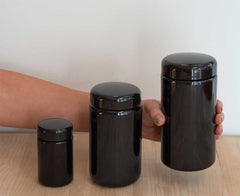heart-health
Recent Research Papers on
heart-health
Authors: E.B. Peixoto and A. Papadimitriou and D.A.T. Teixeira and C. Montemurro and D.A. Duarte and K.C. Silva and P.P. Joazeiro and J.M. Lopes de Faria and J.B. Lopes de Faria
In diabetes mellitus (DM), podocyte apoptosis leads to albuminuria and nephropathy progression. Low-density lipoprotein receptor-related protein 6 (LRP6) is WNT pathway receptor that is involved in podocyte death, adhesion and motility. Glycogen synthase kinase 3 (GSK3) interaction with p53 (GSK3-p53) promotes apoptosis in carcinoma cells. It is unknown if GSK3-p53 contributes to podocyte apoptosis in DM. In experimental DM, green tea (GT) reduces albuminuria by an unknown mechanism. In the present study we assessed the role of the GSK3β-p53 in podocyte apoptosis and the effects of GT on these abnormalities. In diabetic spontaneously hypertensive rats (SHR), GT prevents podocyte`s p-LRP6 expression reduction, increased GSK3β-p53, and high p53 levels. In diabetic \{SHR\} rats, GT reduces podocyte apoptosis, foot process effacement and albuminuria. In immortalized mouse podocytes (iMPs), high glucose (HG), silencing RNA (siRNA), or blocking LRP6 (DKK-1) reduced p-LRP6 expression, leading to high GSK3β-p53, p53 expression, apoptosis, and increased albumin influx. GSK3β blockade by BIO reduced GSK3β-p53 and podocyte apoptosis. In iMPs under HG, GT reduced apoptosis and the albumin influx by blocking GSK3β-p53 following the rise in p-LRP6 expression. These effects of GT were prevented by LRP6 siRNA or DKK-1. In conclusion, in DM, WNT inhibition, via LRP6, increases GSK3β-p53 and podocyte apoptosis. Maneuvers that inactivate GSK3β-p53, such as GT, may be renoprotective in DM.
Authors: Jun Pang and Zheng Zhang and Tong-zhang Zheng and Bryan A. Bassig and Junbo Ge and Yue-jin Yang and Dejia-Huang and Ming Bai and Yu Peng
Background
The effects of green tea intake on risk of cardiovascular disease (CVD) have not been well-defined. The aim of this meta-analysis was to evaluate the association between green tea consumption, CVD, and ischemic related diseases.
Methods
All observational studies and randomized trials that were published through October 2014 and that examined the association between green tea consumption and risk of cardiovascular and ischemic related diseases as the primary outcome were included in this meta-analysis. The quality of the included studies was evaluated according to the Cochrane Handbook 5.0.2 quality evaluation criteria.
Results
A total of 9 studies including 259,267 individuals were included in the meta-analysis. The results showed that those who didn't consume green tea had higher risks of CVD (OR = 1.19, 95% CI: 1.09–1.29), intracerebral hemorrhage (OR = 1.24, 95% CI: 1.03–1.49), and cerebral infarction (OR = 1.15, 95% CI: 1.01–1.30) compared to <1 cup green tea per day. Those who drank 1–3 cups of green tea per day had a reduced risk of myocardial infarction (OR = 0.81, 95% CI: 0.67–0.98) and stroke (OR = 0.64, 95% CI: 0.47–0.86) compared to those who drank <1 cup/day. Similarly, those who drank ≥4 cups/day had a reduced risk of myocardial infarction compared to those who drank <1 cup/day (OR = 0.68, 95% CI: 0.56–0.84). Those who consumed ≥10 cups/day of green tea were also shown to have lower LDL compared to the <3 cups/day group (MD = −0.90, 95% CI: −0.95 to −0.85).
Conclusions
Our meta-analysis provides evidence that consumption of green tea is associated with favorable outcomes with respect to risk of cardiovascular and ischemic related diseases.
Authors: Morgan Murray and Chelsey Walchuk and Miyoung Suh and Peter J. Jones
"Green tea (Camellia sinensis) is an ancient beverage stemming from China more recently gaining interest in Western societies due to its antioxidant capacity. Cardiovascular disease (CVD) a disease of the heart and blood vessels is a result of increased lipid concentrations and blood pressure responsible for numerous deaths worldwide. Green tea is highly enriched in catechins which may be responsible for its proposed \{CVD\} prevention mechanism. The objective of this paper was to examine the scientific evidence pertaining to green tea and \{CVD\} risk and evaluate whether enough credible scientific evidence exists to support a health claim by the United States Food and Drug Administration (US FDA). Sixteen clinical studies have examined the effects of green tea on \{CVD\} risk factors however following a critical evaluation of these studies a health claim cannot be recommended due to the safety and metabolites of green tea as well due to lack of high quality and properly designed studies."
Author: Ecem Evrim Çelik and Vural Gökmen
This work investigates the possibility of interaction between insoluble dietary fiber bound antioxidants, specifically of wheat bran, and soluble antioxidants like those provide by aqueous infusions of green tea. Solutions of pure catechins were also assayed for comparison with those naturally found in tea. To accomplish this, the aqueous and alcohol soluble fractions as well as the lipid components of wheat bran were firstly removed and the freeze-dried insoluble residue was then treated with different concentrations of green tea infusions or aqueous solutions of epicatechin (EC) and epigallocatechin-3-gallate (EGCG) for certain time. Treatment with EC (0–200 μM) had no significant effect on the antioxidant capacity of insoluble bran fraction. However, treatment with EGCG significantly (p < 0.05) increased linearly the antioxidant capacity as a function of concentration (0–100 μM). Treatment with great tea infusions (1–3 g/100 ml) also increased the resulting antioxidant capacity of insoluble bran fraction, but the effect was lesser at higher infusion concentrations. Liquid chromatography couple to mass spectrometry (LC–MS) analyses of aqueous phases after treatment indicated comparable levels of decrease in the concentrations of catechins confirming their reaction with the radical forms of antioxidants bound to insoluble bran matrix.
Author: Hae-Suk Kim and Michael J. Quon and Jeong-a Kim
Green tea is rich in polyphenol flavonoids including catechins. Epigallocatechin 3-gallate (EGCG) is the most abundant and potent green tea catechin. EGCG has been extensively studied for its beneficial health effects as a nutriceutical agent. Based upon its chemical structure, EGCG is often classified as an antioxidant. However, treatment of cells with EGCG results in production of hydrogen peroxide and hydroxyl radicals in the presence of Fe (III). Thus, EGCG functions as a pro-oxidant in some cellular contexts. Recent investigations have revealed many other direct actions of EGCG that are independent from anti-oxidative mechanisms. In this review, we discuss these novel molecular mechanisms of action for EGCG. In particular, EGCG directly interacts with proteins and phospholipids in the plasma membrane and regulates signal transduction pathways, transcription factors, DNA methylation, mitochondrial function, and autophagy to exert many of its beneficial biological actions.








